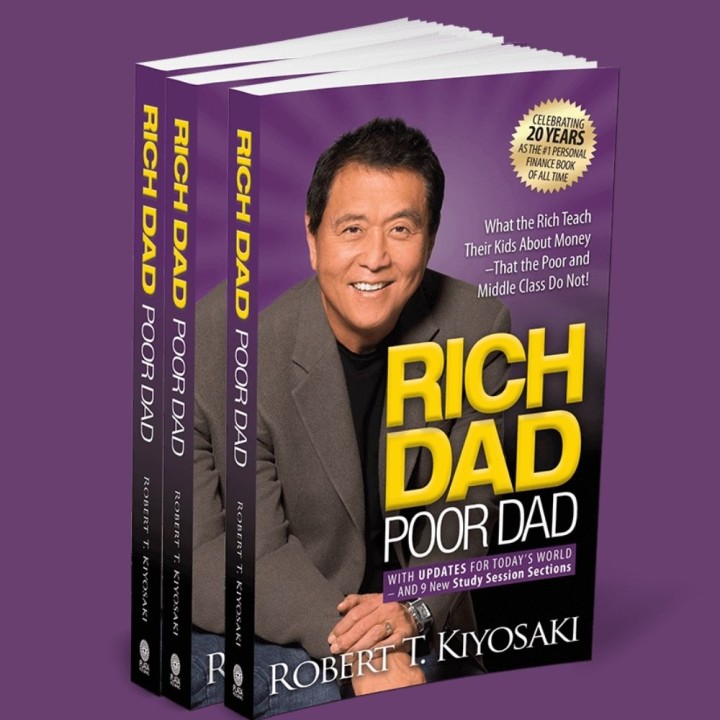
Wealth-Building Wisdom: Key Takeaways from Rich Dad Poor Dad
Financial uncertainty is a reality many people face today, and the search for stability has never been stronger.
Robert Kiyosaki’s best-selling book Rich Dad Poor Dad continues to serve as a guiding light for anyone who wants to understand how wealth is created, sustained, and passed on.
This article explores the core lessons from the book—why financial education matters, how to distinguish assets from liabilities, and what it takes to build true financial independence.
The Two Philosophies: "Rich Dad" vs. "Poor Dad"
Kiyosaki contrasts two very different mindsets about money:
-
Poor Dad – follows a conventional path: study hard, find a secure job, and save for the future. His view of money is centered on stability rather than growth.
-
Rich Dad – focuses on financial education, building assets, and using money as a tool to create more wealth.
This contrast highlights that financial literacy—not just formal education—often determines long-term financial security.
Why Financial Education Matters
Kiyosaki reminds us that mistakes are not failures but learning opportunities. Just as we learn to walk by falling, we learn to build wealth by trying, failing, and improving.
He emphasizes that financial intelligence is not measured by income alone. Instead, it depends on:
-
How much you keep.
-
How effectively your money works for you.
-
Whether your wealth can last for generations.
Financial education provides the foundation for making smart choices that strengthen long-term security.
Making Money Work for You
One of the book’s most practical lessons is shifting focus from active income (working for money) to passive income (letting money work for you).
-
Active Income: Exchanging time for salary or wages.
-
Passive Income: Earnings from investments, rentals, or businesses that continue generating money without daily involvement.
This shift creates financial freedom, as income no longer depends solely on the hours you work.
Assets vs. Liabilities: The Core Lesson
Perhaps the simplest yet most powerful principle in Rich Dad Poor Dad is understanding the difference between assets and liabilities:
-
Assets add money to your pocket.
-
Liabilities take money out of your pocket.
Knowing this difference helps shape every financial decision, from buying a home to choosing investments.
Building Your Financial Foundation
To escape dependency on a single paycheck, Kiyosaki stresses the importance of "minding your own business." This means focusing on creating and managing assets that steadily generate income.
Practical steps include:
-
Investing in real estate, stocks, bonds, or intellectual property.
-
Continuously learning about finance and markets.
-
Reducing unnecessary expenses and liabilities.
-
Building a diversified portfolio of assets.
The Role of Entrepreneurship and Investment
Kiyosaki presents entrepreneurship and investment not as optional, but as key drivers of wealth. Examples include:
-
Real Estate: Rental properties that generate consistent cash flow.
-
Stock Market: Owning shares in companies and benefiting from growth and dividends.
-
Business Ownership: Creating or investing in businesses that operate independently.
Each path requires education, planning, and resilience, but they all contribute to lasting financial independence.
Overcoming Common Obstacles
Fear and doubt often hold people back from taking financial risks. Kiyosaki argues that avoiding risk entirely often leads to stagnation.
Ways to overcome these barriers:
-
Accept that risk is part of learning.
-
Keep updating your financial knowledge.
-
Reframe setbacks as opportunities for growth.
Stories That Illustrate the Lessons
Consider two examples:
-
Sarina followed the "Poor Dad" mindset. She studied, worked hard, and saved, but her financial life remained fragile—one missed paycheck could undo her stability.
-
Mike applied the "Rich Dad" approach. He invested in real estate, learned about stocks, and developed income streams beyond his job. Despite some setbacks, he achieved financial freedom much earlier.
These contrasting paths illustrate how mindset and financial choices shape long-term outcomes.
Lessons for Modern Investing
Though written years ago, Rich Dad Poor Dad remains relevant in today’s digital economy. Its lessons apply to:
-
Cryptocurrency and E-Commerce: New forms of wealth creation.
-
Remote Work: Flexibility to invest in learning and asset-building.
-
Financial Technology Tools: Apps and platforms that make budgeting, investing, and diversification easier than ever.
Action Steps for Building Wealth
Here are practical steps inspired by the book:
-
Assess Your Finances – List your assets and liabilities clearly.
-
Commit to Learning – Stay informed about finance, markets, and opportunities.
-
Create Multiple Income Streams – Don’t rely only on a paycheck.
-
Invest in Assets – Focus on choices that grow wealth instead of draining it.
Final Thoughts
Rich Dad Poor Dad is more than a personal story—it’s a financial guide that has reshaped how millions view money. The biggest lesson? Wealth starts in the mind. With the right education, discipline, and mindset, anyone can move closer to financial freedom.
As Kiyosaki says:
"The single most powerful asset we all have is our mind. If it is trained well, it can create enormous wealth."
Money Must Read Books

